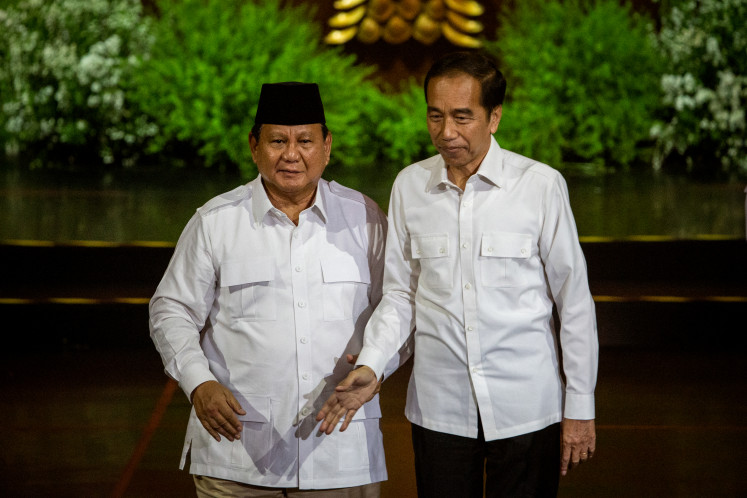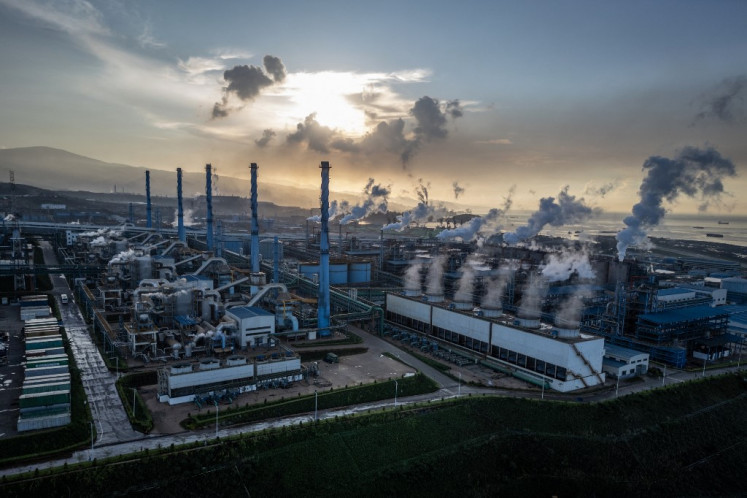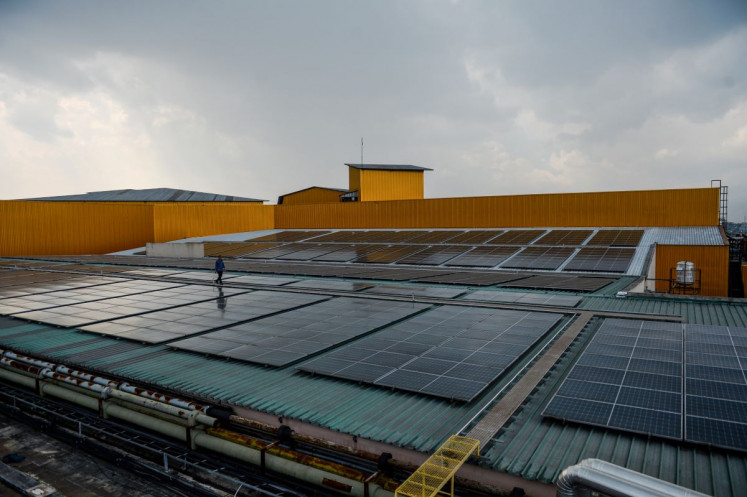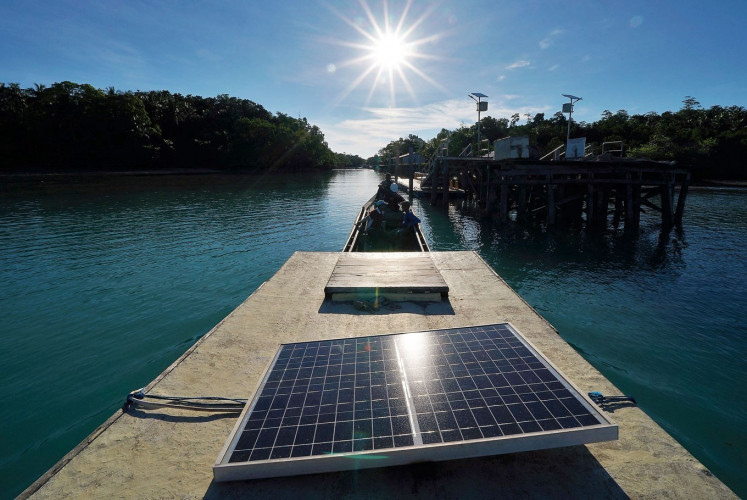Popular Reads
Top Results
Can't find what you're looking for?
View all search resultsPopular Reads
Top Results
Can't find what you're looking for?
View all search resultsA call for realignment of land, natural resources management
Most outstanding of the challenges are the overlapping regulations and institutions, the rising wave of land conflicts with indigenous communities, deforestation, illegal mining and other practices of reckless natural resource extraction.
Change text size
Gift Premium Articles
to Anyone
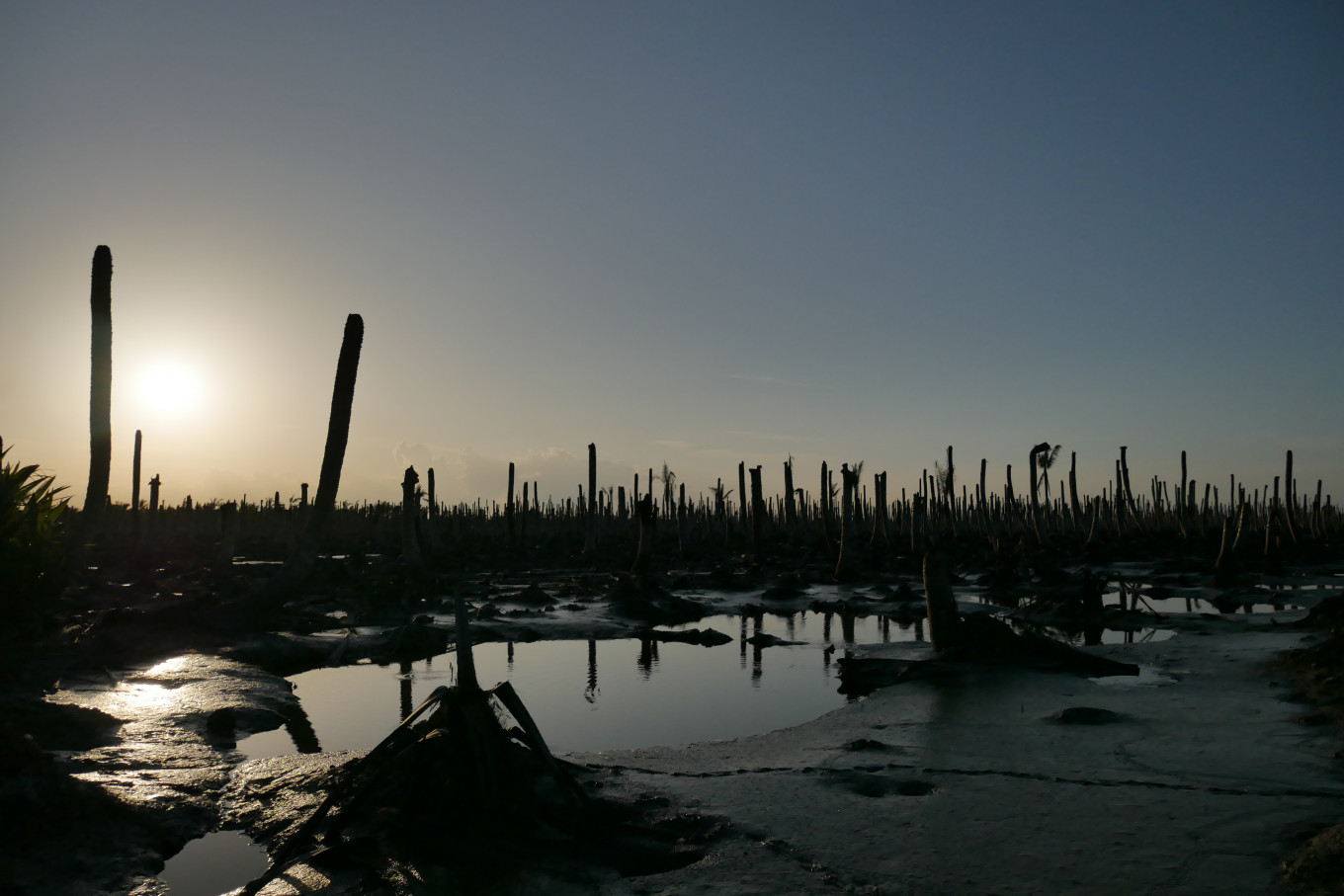 Barren land: Rows of dead coconut trees are seen in this photo taken on July 25, 2023, in one of the former coconut plantations of Kuala Selat village in Indragiri Hilir, Riau. Seawater is intruding further inland as the village loses the mangrove forests that protect it from waves and erosion. (JP/Tonggo Simangunsong)
Barren land: Rows of dead coconut trees are seen in this photo taken on July 25, 2023, in one of the former coconut plantations of Kuala Selat village in Indragiri Hilir, Riau. Seawater is intruding further inland as the village loses the mangrove forests that protect it from waves and erosion. (JP/Tonggo Simangunsong)
A
s a vast archipelagic country, Indonesia is richly endowed with land and a wide variety of natural resources, which have contributed greatly to its economic development and resilience, thereby making the country now the 16th largest economy in the world.
Now, as president-elect Prabowo Subianto and vice president-elect Gibran Rakabuming Raka are preparing their cabinet to take over the government on Oct. 20, it is an opportune time to revisit the structure of President Joko "Jokowi" Widodo’s administration and review its policies, regulations and institutions that have managed the land and natural resources over the last decade.
Even though Prabowo has pledged to continue Jokowi’s main economic policies, the new government needs to take lessons from the complex challenges and excesses of the land and natural resource governance and management over the last 10 years. Most outstanding of the challenges are the overlapping regulations and institutions, the rising wave of land conflicts with indigenous communities, deforestation, illegal mining and other practices of reckless natural resource extraction.
There are now various central government ministries and agencies assigned to regulate and manage the land and natural resources.
Land management and spatial planning are basically managed by two national agencies: The Agrarian and Spatial Planning Ministry/National Land Agency (BPN) which is mandated to manage all lands outside forest areas and the Environment and Forestry Ministry in charge of overseeing the forests and the land within the areas under forest status.
All land in Indonesia falls into one of two groups. The first group is the forest zone with an area of about 124 million hectares, which is two-thirds of Indonesia’s landmass. The forest zone falls under the administration of the Environment and Forestry Ministry.
The forest zone is further divided based on functions, such as production forests that cover 69 million ha, protected forests with 29.5 million ha, conservation areas with 27.5 million ha, fixed (permanent) production forests with 35 million ha and production forests that can be converted into other purposes with 20 million ha.







